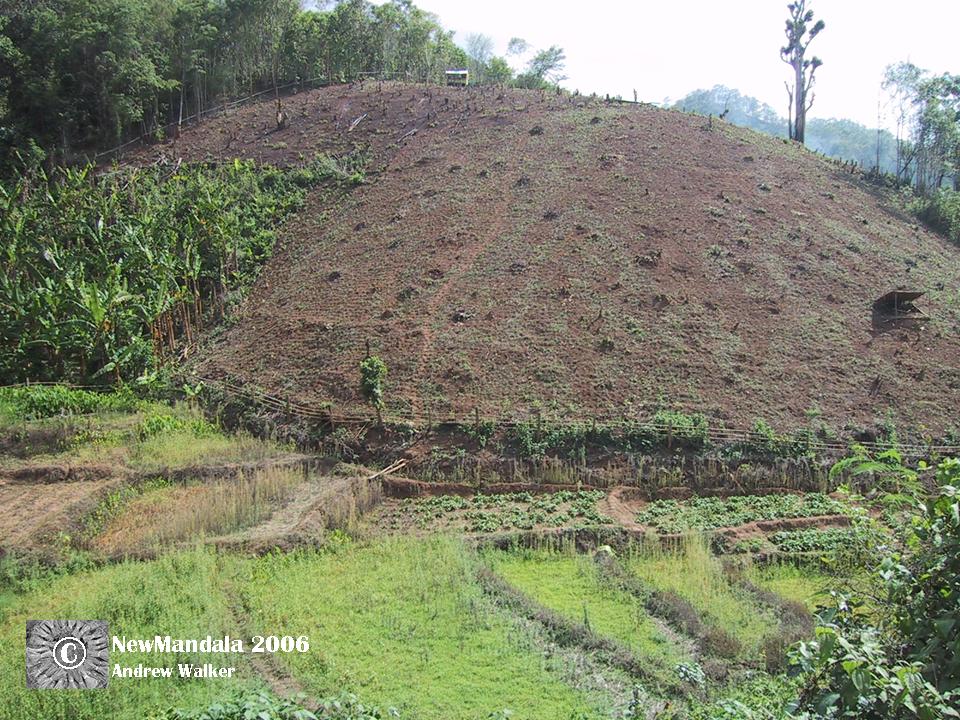The 2nd International Conference on Sustainable Sloping Lands and Watershed Management: Linking Research to Strengthen Upland Policies and Practices will be held from 12-15 December 2006 in Luang Prabang, Lao PDR.The conference organizers tell us that:
“The upland areas of Southeast Asia are, for the most part, inhabited by communities that are often poor, politically disempowered and economically marginalized and have few viable options available to address issues of food insecurity, poverty and unsustainable resource management. It is well recognized that increased exploitation of land and water resources in upper catchments, with associated fragmentation of native vegetation, results in sediment discharge and elevated nutrient loads that reduce the quality and availability of water to downstream users. This has had a direct negative impact on the economic and social fabric of communities that are dependant on natural resources for goods and services in order to sustain already tenuous livelihoods.
From a biophysical perspective a considerable amount of information and knowledge has been generated on the causes and processes associated with enhanced sediment discharge from highly incised upper catchments. To this end, appropriate land and water conservation strategies have been developed and promoted that eliminate or reduce sediment discharge from these systems. To date, however, the adoption of these resource conserving strategies has been inadequate to effect significant changes in sediment discharge to river systems in Southeast Asia.”
Can we really be so certain about claims of increased sediment discharge as a result of upland cultivation? And is the need for remedial action really so clear? The experience from northern Thailand (where sediment if often a preoccupation of government agencies and lowland environmentalists) suggests that there is considerable room for skepticism. Important research by Alford (1992: 267-268) shows that there is significant year-to-year variation in sediment yield, matching year-to-year variation in stream flow, but that “[v]olumes of suspended sediment moving through the rivers of northern Thailand are among the lowest of all river systems worldwide.” A similar review of data by Enters (1995) demonstrates that sediment loads in northern Thailand’s major river (the Ping) increased somewhat from the 1960s to the mid 1970s but declined again to the mid 1980s, despite ongoing deforestation, and agricultural transformation. As with the study undertaken by Alford there is a clear correlation with short and medium term variation in stream flow suggesting “a sediment source within the stream channel …rather than sheet erosion” (Enters 1995: 97-99). These results indicated that much erosion occurring on hillsides in the uplands is likely to be trapped in numerous landscape filters and points of re-deposition before reaching the main river network. Have a look a this example of upland sediment filtering:
Conferences like this might be much more effective if they started out by questioning conventional environmental accounts (which often place blame for degradation on the most marginal farmers) rather than taking such assumptions as a pseudo-scientific starting point for discussion.
More information about the conference can be obtained from:
SSLWM Conference Secretariat
National Agriculture and Forestry Research Institute
PO Box 7170
Vientiane, Lao PDR
Tel: 856-21-770-084; Fax: 856-21-770-047
Conference secretariat at: SSWM2006@nafri.org.la
Or visit the NAFRI website at: www.nafri.org.la
REFERENCES
Alford, D. 1992. Streamflow and sediment transport from mountain watersheds of the Chao Phraya Basin, northern Thailand: a reconnaissance study. Mountain Research and Development 12 (3): 237-268
Enters, T. 1995. The economics of land degradation and resource conservation in northern Thailand: challenging the assumptions. In Counting the Costs: Economic Growth and Environmental Change in Thailand, edited by J. Rigg. Singapore: Institute of South East Asian Studies.
 Facebook
Facebook  Twitter
Twitter  Soundcloud
Soundcloud  Youtube
Youtube  Rss
Rss 